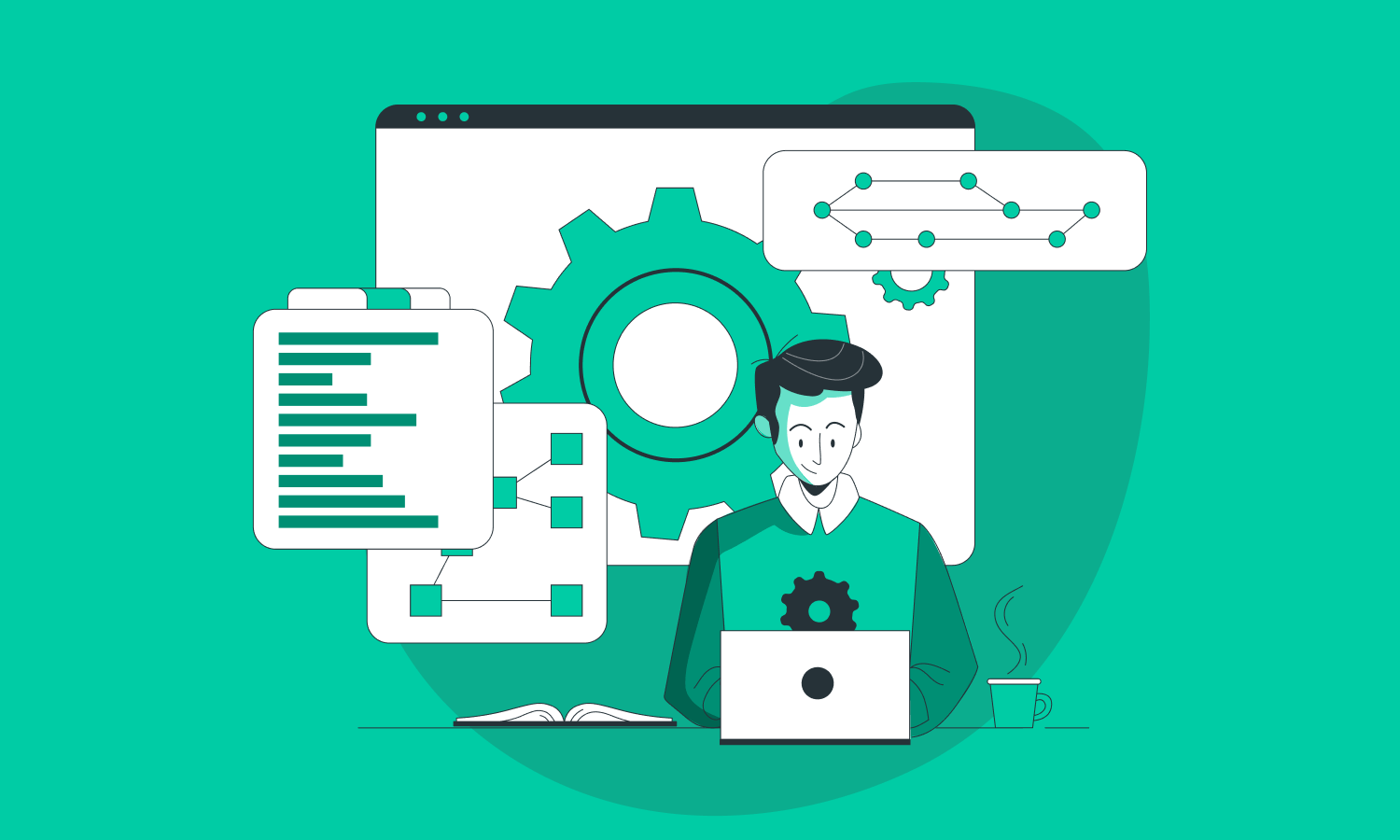Defining Functional and Nonfunctional Requirements

Thoroughly defined requirements help software developers and customers to meet all deadlines, avoid financial risks, and release quality products.
What does the process of drawing requirements include? It involves information gathering, concretization, analysis, validation, and other management stages. Let’s review functional and nonfunctional requirements and define their specialties, advantages, and main differences right away.
The meaning of requirements in software development
There are several kinds of requirements:
- Business requirements that represent high-level goals. These requirements define what the company and its employees need.
- Stakeholders’ requirements are what business owners expect to gain in a particular situation.
- Solution requirements describe the product characteristics that can satisfy the expectations of business and stakeholders.
- Transition requirements mean what functionality the company needs to get desirable efficiency or other business goals.
- Functional requirements describe the behavior of the software product in certain situations.
- Nonfunctional requirements formulate quality attributes and describe common system characteristics, such as availability or security.
The goal of our post is to focus on the last two types of requirements
What Are Functional Requirements?
A functional requirement in the software engineering world determines a system or its component. It consists of the functions a software must perform.
A function involves inputs, software behavior, and its outputs. It can be a calculation, business process, data manipulation, user interaction, etc. Functional requirements are aimed to help in capturing the intended behavior of the system.
What Are Non-Functional Requirements?
Non-functional requirements define the quality attribute of a software system, representing a range of standards used to judge the specific operation of a system. How fast your website loads is an example.
We need non-functional requirements to ensure the usability and effectiveness of the whole software system. Noncompliance with these requirements can result in systems that fail to satisfy user needs. Non-functional requirements allow imposing restrictions on the system design across different Agile backlogs.
What are the key differences between functional requirements and non-functional requirements?
- A functional requirement defines a system or its component while a non-functional requirement defines the performance attribute of a software system.
- A functional requirement is a verb. A non-functional requirement is an attribute.
- Functional requirements assist in identifying missing requirements while the main profit from non-functional requirements is that they help to ensure the ease of software operating and good user experience.
- The types of functional requirements involve business rules, adjustments and cancellations, transaction corrections, certification requirements, administrative functions, reporting requirements, authorization levels, external interfaces, and so on.
- The types of non-functional requirements include availability, scalability capacity, reliability, recoverability, etc.

The Forms of Functional Requirements
Functional requirements should be clear for both developers and stakeholders. They can be presented as a text, a chart, software requirements specification document, use cases, user story, functional decomposition, or software prototypes.
Requirements specification document
This doc contains a full description of the features that your product should have with the possible limitations. It can be presented in the form of a separate document or a set of use cases or user stories.
It is important to register all requirements for every function before writing it. Make sure your software requirements specification document is readable for all developers and stakeholders.
Use case
The goal of use cases is to describe the ways of interaction between a system and users. They demonstrate how users can achieve certain goals. Every use case has three elements: actors, the system itself, and goals. You may present it in the form of a text or diagram that outlines a sequence of actions.
User story
A user story includes the description of software functions in terms of interaction with the end-user. It reflects what users expect from the system and looks like to-do lists consisting of product features.
The typical formula for a user story is how <type of user>, I want <goal>, so that <reason>
Functional decomposition
Functional decomposition (also known as WBS – Work Breakdown Structure) helps to present the project as a clear scheme of understandable components.
Software prototype
Software prototypes help to illustrate how requirements should be implemented and how customers will work with the product. They also assist to make weaknesses of the product more evident. Throwaway or evolutionary are the two most popular ways of prototyping.

The Forms of Non-functional requirements
Nonfunctional requirements are also known as quality attributes. They describe the desirable characteristics of a system.
Usability
Usability is aimed to demonstrate the level of convenience of using the product by its market. It can be assessed with the help of such criteria as efficient usage, intuitive understanding, and low perceived workload.
Reliability
Reliability defines how reliable the software is and how much time the system can work without errors. This factor depends on the quality of code and possible problems with other components or hardware.
Availability
Customers need to define the most important system components that should be available at any time and developers should prepare notifications for users when some parts of the product are not working.
Security
This form pf non-functional requirements defend the software from unauthorized access to sensitive data. Security is also about protection from viruses and cyber-attacks.
Performance
It describes the quality of interactions between users and systems. Slow performance may lead to negative user experience.
Scalability
Scalability means that system growth and an increasing number of users and information shouldn’t affect its performance. It highly depends on the proper choice of technology stack and software architecture.

What are the examples of functional requirements?
- The software should be integrated with banking API.
- The Sales system is capable to record customers sales.
- Only top managers have the right to view revenue data.
What are the examples of non-functional requirements?
- The software should be portable and avoid the problems of moving from one OS to another.
- Users must change the initially assigned login password immediately after the first login.
- It is forbidden for employees to update their salary info. Such attempts should be reported to the security office.
What are the benefits of functional requirements?
Composing a functional requirement document will benefit you in the following way:
- It Will help to check whether the app is providing all the functionalities that were mentioned in the functional requirement.
- Will help to determine the functionality of a system (or one of its subsystems).
- Will help to identify missing requirements.
- It is cheaper to fix errors caught in the functional requirement gathering phase.
- They can be expressed in use case form or user story as they exhibit externally visible functional behavior.
What are the advantages of non-functional requirements?
- They ensure the software system follows compliance and legal rules.
- They guarantee the availability, reliability, and performance of the software system.
- They ensure the ease of operating the software and good user experience.
- They help in formulating the software system’s security policy.
Final words
You may present requirements in different ways, from lists to software prototypes. However, remember that they should always be clear and unambiguous.
Functional requirements are aimed to ensure that developers and customers are on the same page and they know what to expect from the software. Nonfunctional requirements represent the qualities your product should have to meet customers’ expectations.



